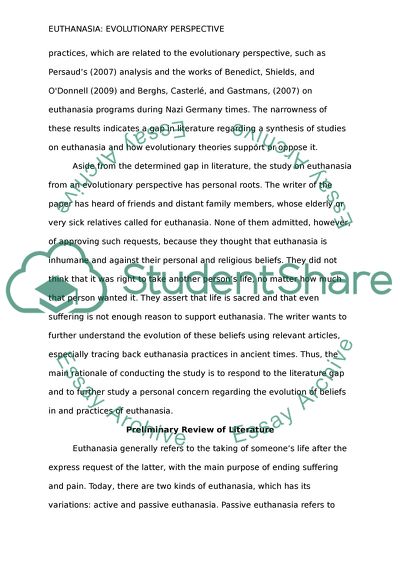Cite this document
(An Evolutionary Perspective on Euthanasia Research Proposal Example | Topics and Well Written Essays - 1500 words - 1, n.d.)
An Evolutionary Perspective on Euthanasia Research Proposal Example | Topics and Well Written Essays - 1500 words - 1. https://studentshare.org/health-sciences-medicine/1803685-euthanasia
An Evolutionary Perspective on Euthanasia Research Proposal Example | Topics and Well Written Essays - 1500 words - 1. https://studentshare.org/health-sciences-medicine/1803685-euthanasia
(An Evolutionary Perspective on Euthanasia Research Proposal Example | Topics and Well Written Essays - 1500 Words - 1)
An Evolutionary Perspective on Euthanasia Research Proposal Example | Topics and Well Written Essays - 1500 Words - 1. https://studentshare.org/health-sciences-medicine/1803685-euthanasia.
An Evolutionary Perspective on Euthanasia Research Proposal Example | Topics and Well Written Essays - 1500 Words - 1. https://studentshare.org/health-sciences-medicine/1803685-euthanasia.
“An Evolutionary Perspective on Euthanasia Research Proposal Example | Topics and Well Written Essays - 1500 Words - 1”. https://studentshare.org/health-sciences-medicine/1803685-euthanasia.


